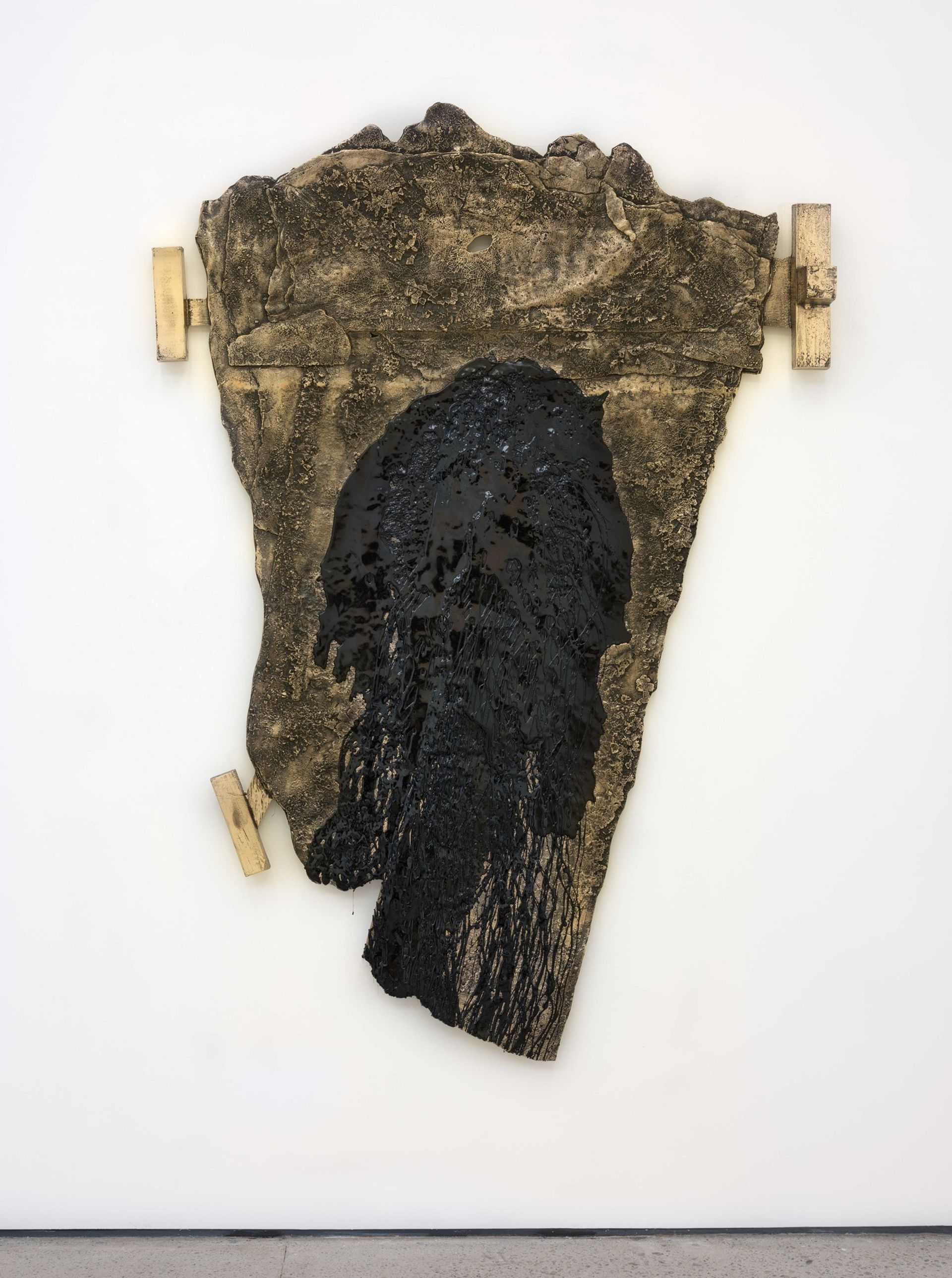The Chicago-based artist Theaster Gates returns to Hong Kong for his second show at White Cube’s outpost in the city. Tarry Skies and Psalms for Now (until 20 May) features new works created using roofing materials and techniques, a skill Gates learned from his father, as well as a series of bronze sculptures on the same theme. The artist spoke to us as he was preparing to open his solo show at the National Gallery of Art in Washington, DC (until 4 September), which includes works made from repurposed architectural materials, such as the slate roof of the decommissioned St Laurence Church in Chicago and a high school gym’s painted parquet floor.
The Art Newspaper: What is it like showing your work in China?
Theaster: It’s my second project with White Cube Hong Kong, but it still feels really new for me. I think this show will enable me to be present in China in a way that I haven’t been in the past. The Chinese collecting community has been really supportive of the work, but I’ve not met many of the people. So this will be my first deep dive into Hong Kong and China.
My first exhibition [in 2013] introduced my tar work to China, so I wanted to follow up on the evolution of that work in my second show; I feel more mature and confident in the moves I’m making art-wise and in the world. This project is deepening my involvement in this idea that I’d take one labour practice, which is roofing, and try to turn what had been just labour into an aesthetic practice. So, imagine roofing as the art form.
This show introduces colour into the black field—it comes from another set of materials, which is a kind of 1970s Naugahyde. The tar, in this case, becomes the binder that enables me to play with colour in a way that I’ve never done before in my practice.

What about the bronze works in the show?
Bronze is a new material for me. They are casts of failed roofs, and they’re trying to capture the fragility of this roofing material that had started to fail—it’s now rigid, it doesn’t hold water any more. After 30 or 40 years of sun and distress, it starts to create this texture that a new roof would never offer. It seems like it’s in hyper-decay and then once transferred to bronze, it becomes this relief of an amazing surface, and it’s a way for me to preserve that roof. I think the roofing works change your perception of where beauty lives and where it comes from.
What’s it like having a show on in Washington, DC right now?
At first I was a little bit anxious, about this show and the one in Los Angeles [at Regen Projects], because the timing of them both was during such an important moment of national change. But in fact, I’m actually excited to not have to think about the politics and really commit to things that I’ve always been committed to and make a great show.
One of the works is a free-standing library, New Egypt Sanctuary of the Holy Word and Image (2017), that houses the archives of Ebony magazine.
An ongoing project of mine is to demonstrate the power of these under-known black images by redeploying them in the world in a different way. And to understand that the future of these historic images rests in the hands of the artist, whose role is then to redeem those images.
With the black library, these periodicals were unbound, so there was an investment in binding them, giving them a code and then giving them a home. It’s a kind of micro-architecture that enables people to experience the awe of being in a small sacred temple made for knowledge.
I’m also preoccupied with this idea that so many of the legacies on the African continent were either burned or pillaged. I’m attempting to make a new Coptic library, a new hieroglyphic art, a new code that in fact won’t be burned because it lives at our nation’s Capitol and we’ll defend it with our huge military.
Another work in the show is A Game of My Own (2017), made from the painted floorboards of a high-school gym. It’s an interesting take on abstract painting.
I’m a former athlete; I used to really enjoy being in my body and playing organised games. And the thing I took away from those games the most was the value of having the coach, of having a team and a set of people I’m responsible to, and all of the positive social ordering that happens as a result of these scrimmage lines. They’re simple, concrete lines that have deep social and conceptual ramifications for how a kid learns to organise the world.
What I’ve seen happening around the country, not just in Chicago, is a divestment in public education. We have all of these centres of learning and of play, but young people aren’t learning the game, and as a result don’t have the opportunity to understand the power of supporting their team member, or knowing the value of boundaries. In a way, it’s created a dishevelling of the social order. And I’m able to make that dishevelling literal through these colour paintings where the scrimmage line is distorted; the inscribed order that had been in the gym room, that I’d brought to my studio, all of that’s lost. It’s also an abstraction on this sad state, where everybody is playing their own game.
• Tarry Skies and Psalms for Now, White Cube, 50 Connaught Road, Central, until 20 May


